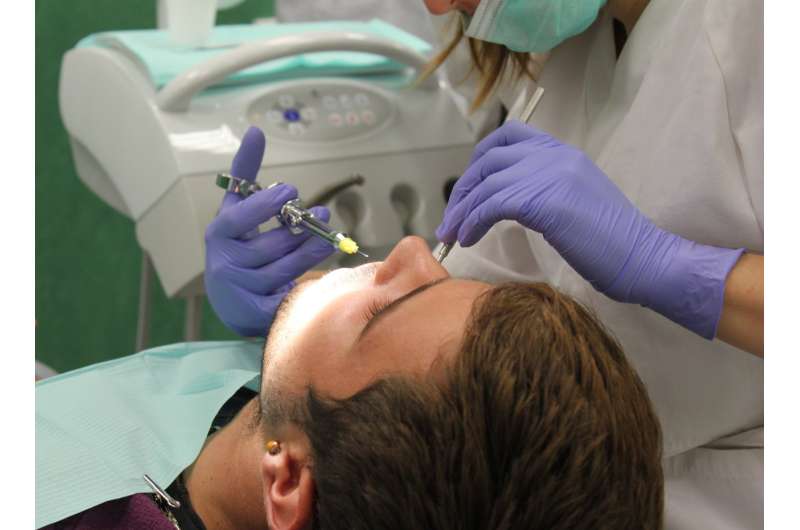Researchers detect the most efficient salivary biomarkers for detecting oral cancer

Over 90 percent of malign tumours in the head and neck are originated from carcinomas of squamous cells that appear in superficial areas of the oral cavity. Their detection with salivary biomarkers can contribute to early treatment, before they transform into tumours. Researchers at the Oral Microbiology Research Group of the CEU Cardenal Herrera university (CEU UCH) in Valencia, Spain, have conducted a systematic review and a meta-analysis of the salivary markers that show the highest efficacy for the early detection of oral cancer in different clinical trials. The results have just been published in the Journal of Oral Pathology and Medicine, the official magazine of the International Association of Oral Pathogens in the field of Dentistry, Oral Surgery and Medicine.
According to Verónica Veses, head researcher of the Group and professor at the Biomedical Sciences Department of the CEU UCH, "detection of this type of squamous cell cancer in the surface of the mouth essentially depends of the visual examination on behalf of oral health professionals. This is why it is important to find new diagnostic methods to help with accurate early detection. Specially if we take into account that oral cancer is the most common of the tumours in the head and neck, and which is increasingly prevalent among the young population due to the consumption of tobacco and alcohol."
Three types of biomarkers
The research team headed by Dr. Veses has conducted a systematic review and a meta-analysis of the clinical trials that have thus far evaluated the efficacy of the three types of salivary biomarkers that are the most promising for the early detection of this type of oral cancer. These salivary markers are two types of cytokines, proteins involved in cellular proliferation and differentiation; two markers that are present in the ribonucleic acid that transfers the genetic code, the messenger RNA or mRNA (DUSP‐1 and S100P); and two more in the micro-RNA (miRNA) of the saliva, but which require further research.
Both mRNA biomarkers have shown to be the most efficient for the early detection of oral squamous cell carcinoma and of neck and head cancer, when comparing the results obtained in the 17 clinical trials reviewed during the research. These tests were chosen as appropriate for the study among those published after the year 2000 in the international database Medline and the international registry of clinical trials: the Central Register of Controlled Trials.
More information: Fariah I. Gaba et al. Salivary biomarkers and their efficacies as diagnostic tools for Oral Squamous Cell Carcinoma: Systematic review and meta-analysis, Journal of Oral Pathology & Medicine (2018). DOI: 10.1111/jop.12791


















